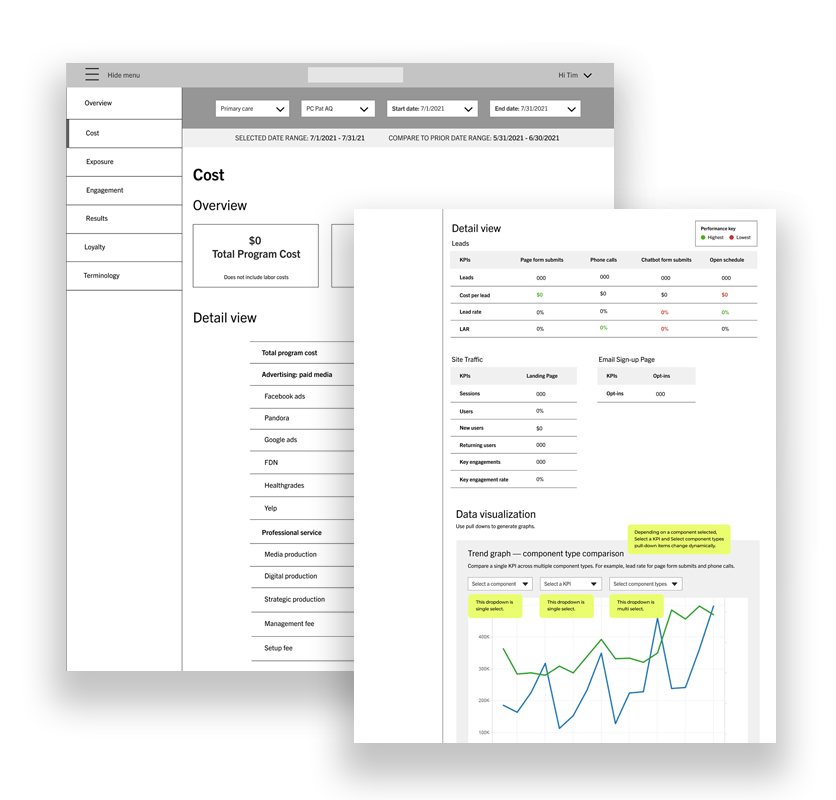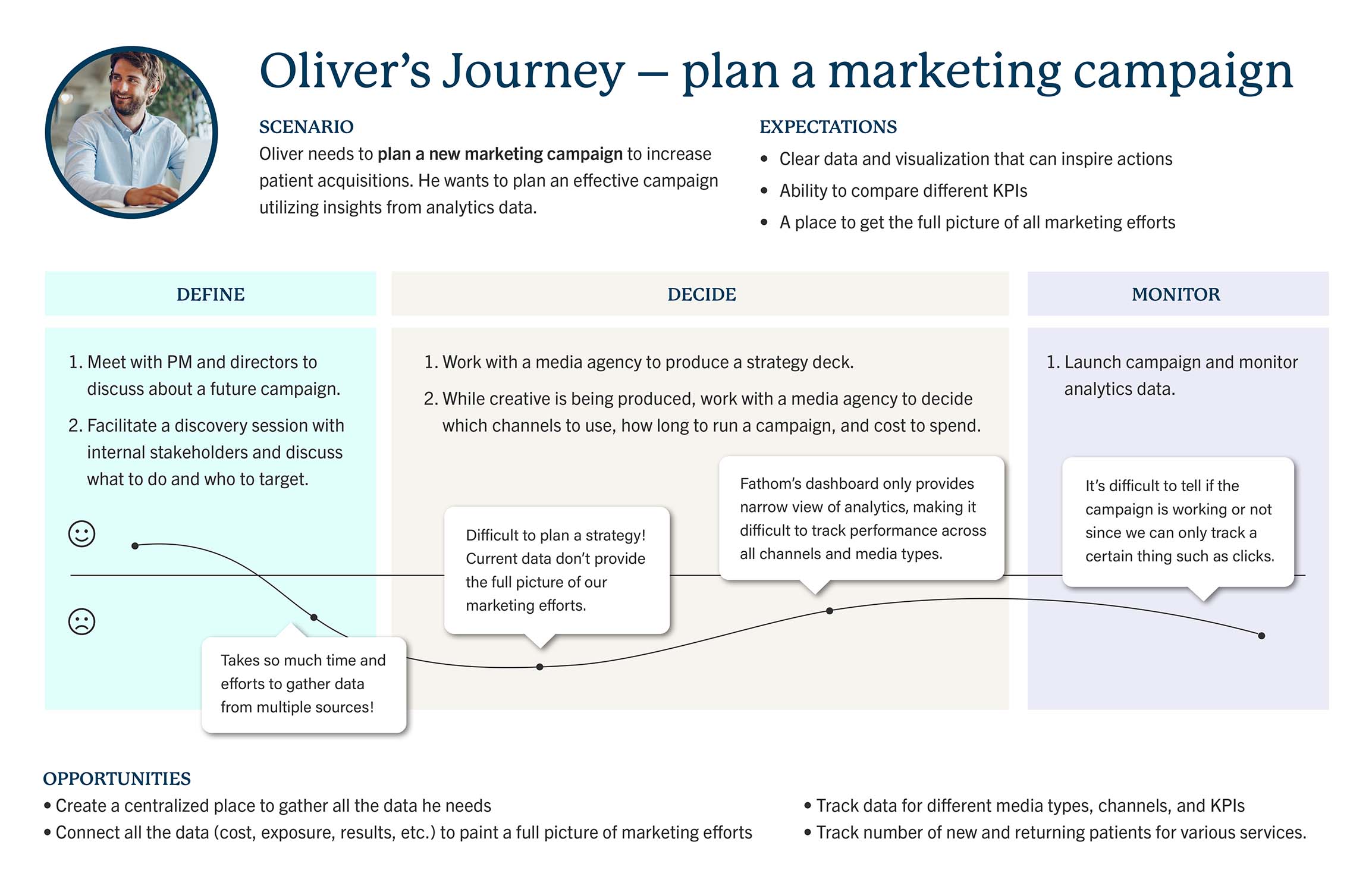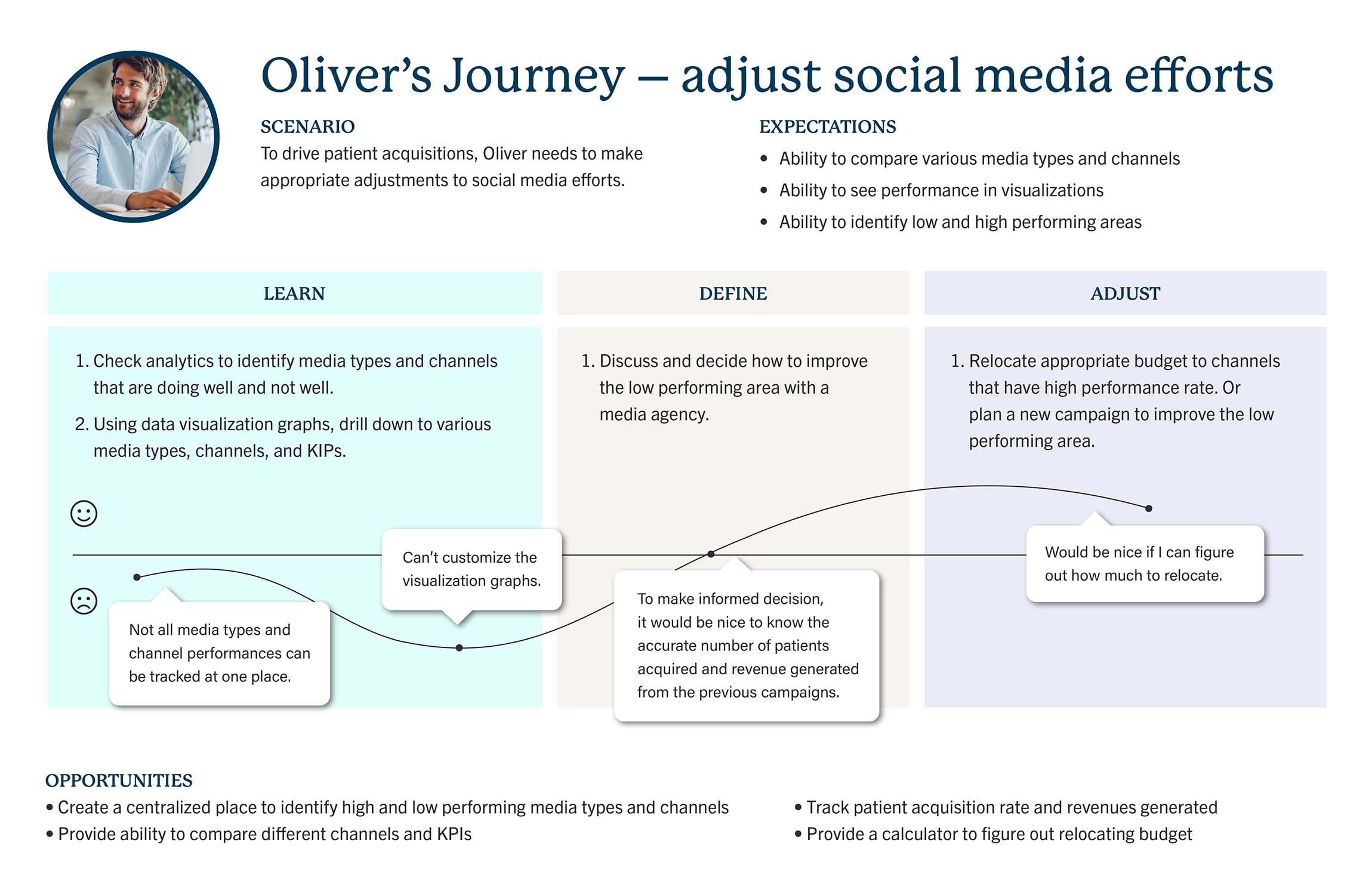
UMA DASHBOARD
To track performances on social media and campaigns, strategists currently pull data from multiple sources. This is due to siloed analytics and costing strategists time and efforts. Also, current analytics don’t provide a unified view of channels and patient acquisition result. To solve the problems, UMA (Unified Marketing Analytics) Dashboard was created.





